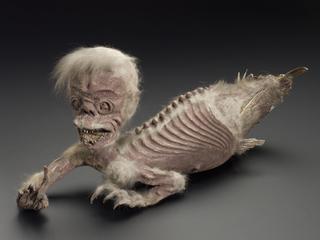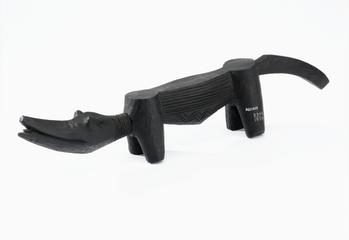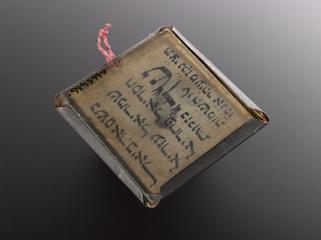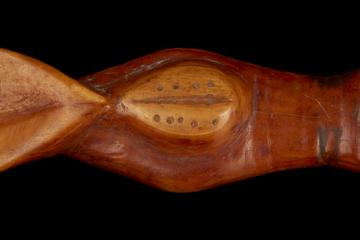




Necklace of woody nightshade stalks, amulet to protect against teething problems, Lovett collection, from Coventry, English, 1901-1913
The growing influence of biomedicine in the 1800s did not necessarily replace established forms of treatment based on belief and superstition. What could be referred to as folk medicine – customs that often went back generations – continued to be practised. For example, some believed that if a double or single row of woody nightshade stalks threaded on string were placed around a child’s neck it might protect against teething problems.
The necklace was changed every other day. This one was a gift to the Wellcome collections in 1916 from Edward Lovett (1852-1933), a collector of British amulets and charms. It is pictured here with other teething amulets: a piece of flint (A132464), a piece of turf (A132465) and a calf’s tooth (A665423).
Details
- Category:
- Ethnography and Folk Medicine
- Collection:
- Sir Henry Wellcome's Museum Collection
- Object Number:
- A132471
- Materials:
- stalk, solanum dulcomara or woody nightshade and fibre, thread
- Measurements:
-
overall: 242 mm x 62 mm, 160 mm,
- credit:
- Lovett, E.R.




